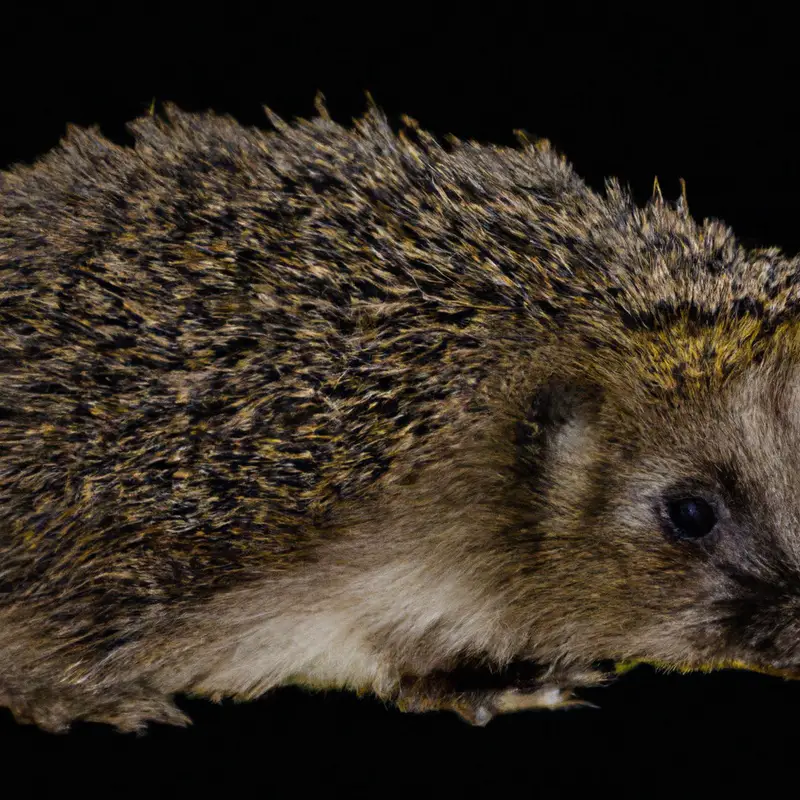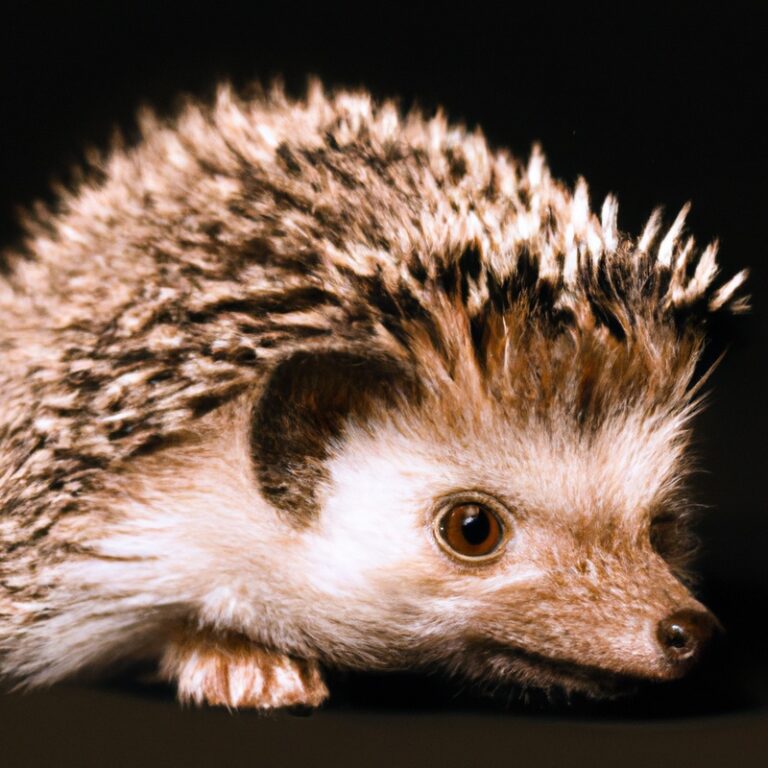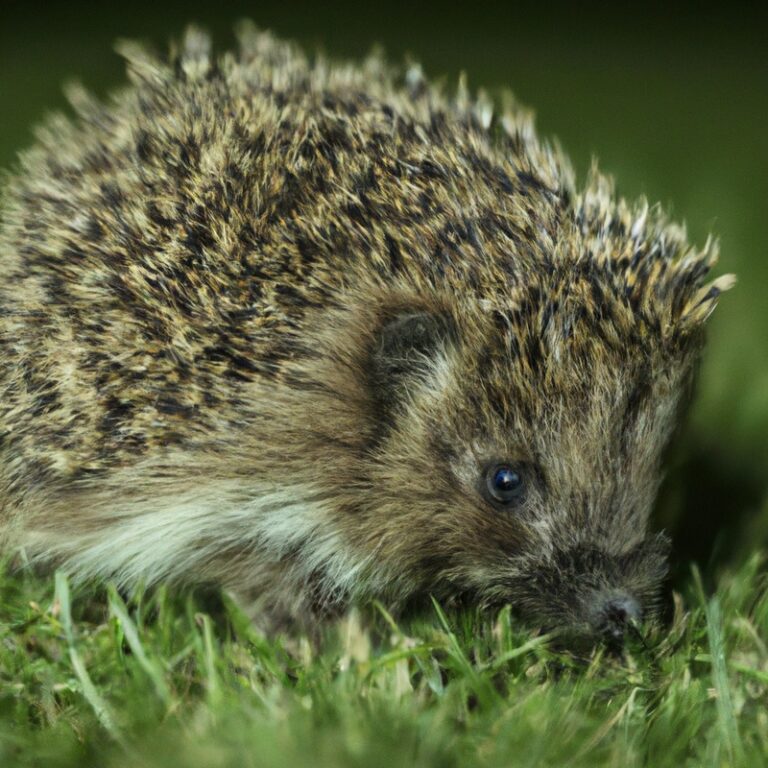How To Prevent Hedgehog Road Accidents?
Key Takeaways:
- Install hedgehog-friendly fencing along roads to prevent them from crossing.
- Educate communities on the dangers of hedgehog road accidents and encourage responsible driving practices.
- Create safe havens like hedgehog tunnels or underpasses to help them safely navigate roads.
- Plant hedgerows and provide natural habitats near roadways to discourage hedgehogs from venturing onto the roads.
Are you tired of seeing those adorable hedgehogs on the side of the road, lifeless and injured? It’s heartbreaking, isn’t it?
Well, you’ll be glad to know that there are ways we can prevent these tragic hedgehog road accidents and protect these spiky little creatures.
In this article, we will explore the importance of preventing hedgehog road accidents and share practical tips on how you can make a difference. So, if you’re ready to make our roads safer for these charming critters, let’s dive in and learn how we can help them stay out of harm’s way!
| Prevention Measures |
| Provide fencing around gardens |
| Remove hazards in the garden |
| Install hedgehog tunnels under fences |
| Avoid using chemical pesticides |
| Check before mowing or strimming grass |
| Ensure gaps in walls and fences are small |
| Leave gaps at the bottom of fences for hedgehogs to pass through |
| Keep ponds and pools safe with sloping sides or a ramp |
| Watch out for hedgehogs when driving at night |
Understanding the Importance of Preventing Hedgehog Road Accidents
Preventing hedgehog road accidents is crucial for the well-being of these adorable creatures.
Why Hedgehog Road Accidents Are a Concern
Hedgehog road accidents are a concern because they pose a threat to the hedgehog population. These accidents can result in injury or death for the hedgehogs, which are already facing declining numbers due to habitat loss and other factors.
Additionally, hedgehogs play an important role in ecosystems as natural pest controllers.
By reducing road accidents, we can help protect these unique and valuable creatures for future generations to enjoy.
Raising Awareness about Hedgehogs and Road Safety
One important way to prevent hedgehog road accidents is by raising awareness about hedgehogs and road safety.
By educating the public, promoting responsible pet ownership, and supporting wildlife conservation efforts, we can help protect these adorable creatures.
Educating the Public about Hedgehogs
To educate the public about hedgehogs, it is important to raise awareness about their behavior and needs.
Here are some ways to do this:
- Share information through social media, websites, and local community platforms.
- Organize workshops and educational events to teach people how to create hedgehog-friendly environments.
- Liaise with schools and educational institutions to incorporate hedgehog education into the curriculum.
- Distribute informative pamphlets and posters at veterinary clinics, wildlife centers, and other relevant locations.
- Encourage responsible pet ownership and inform the public about the dangers of letting dogs off-leash in hedgehog habitats.
By educating the public about hedgehogs, we can help ensure their safety and conservation.

Encouraging Responsible Pet Ownership
Encouraging responsible pet ownership starts with education and awareness.
Providing information about proper pet care, including feeding, grooming, and exercise, is essential.
Also, promoting spaying/neutering and regular vet visits can help ensure the health and well-being of pets.
Encouraging adoption from shelters rather than buying from breeders is another way to promote responsible ownership.
Lastly, it’s crucial to emphasize the importance of picking up after pets and keeping them on leashes to maintain a clean and safe environment for everyone.
Promoting Wildlife Conservation Efforts
Promoting wildlife conservation efforts is essential to protect and preserve our fragile ecosystems. Here are some ways we can make a positive impact:
- Support conservation organizations: Donate to reputable wildlife conservation organizations to fund their conservation projects and initiatives.
- Spread awareness: Use social media, personal networks, and educational platforms to raise awareness about the importance of wildlife conservation and the threats they face.
- Get involved locally: Participate in local conservation projects, join volunteer programs, or support wildlife rehabilitation centers in your area.
- Reduce your ecological footprint: Make sustainable choices in your daily life to minimize your impact on the environment, such as reducing waste, conserving water, and using eco-friendly products.
- Engage in responsible tourism: Choose wildlife-friendly tours and accommodations that prioritize ethical and sustainable practices. Avoid engaging in activities that exploit or harm wildlife.
- Inspire future generations: Educate children and young people about the importance of wildlife conservation, encourage their curiosity, and foster a love for nature.
Remember, every small action we take can contribute to preserving our natural world for generations to come. Together, we can make a difference and promote wildlife conservation efforts.

Creating Hedgehog-Friendly Environments
To create hedgehog-friendly environments, focus on providing suitable habitats, installing hedgehog-friendly fencing and barriers, and removing hazards from their habitats.
Providing Suitable Habitats for Hedgehogs
Hedgehogs need suitable habitats that cater to their needs.
Here are a few ways you can provide a welcoming environment for these adorable creatures:
- Allow natural vegetation to grow in your garden to provide shelter and hiding places for hedgehogs.
- Create a hedgehog-friendly area by leaving leaf piles, logs, and brush piles as potential nesting sites.
- Avoid using pesticides or chemicals in your garden, as they can be harmful to hedgehogs and their food sources.
- Remove any hazards or obstacles that might threaten or block their movement, such as fences with small gaps or deep ponds.
- Provide a constant source of fresh water by placing a shallow dish or bowl in a secure area of your garden.
Installing Hedgehog-Friendly Fencing and Barriers
Installing hedgehog-friendly fencing and barriers is a simple yet effective way to prevent hedgehog road accidents.
Here are some tips:
- Use fencing with small gaps – Hedgehogs are known for their ability to squeeze through tight spaces. By using fencing with small gaps, you can prevent them from accessing dangerous areas such as roads.
- Consider adding a barrier at the bottom – To ensure hedgehogs cannot burrow under the fence, it’s a good idea to install a barrier at the bottom. This can be done by burying a few inches of the fence or using a solid material.
- Avoid sharp edges or metal spikes – Hedghogs are curious creatures that may try to climb over fences. To prevent injuries, it’s important to avoid using fences with sharp edges or metal spikes.
- Check for any gaps regularly – Regularly inspect your fencing and barriers to ensure there are no gaps or damages that hedgehogs can exploit.
By taking these steps, you can create a safer environment for hedgehogs and minimize the risk of road accidents.
Removing Hazards from Hedgehog Habitats
To remove hazards from hedgehog habitats, you should:
- Ensure there are no open pits or deep holes that hedgehogs might fall into, as they can struggle to get out.
- Keep your garden free of litter, as hedgehogs can get tangled in plastic or other materials.
- Avoid using chemical pesticides in your garden, as hedgehogs may ingest them while hunting for food.
- Cover or securely close any garden ponds, as hedgehogs can drown if they fall in.
- Create safe passages in fences or garden boundaries to allow hedgehogs to enter and exit your property without getting stuck.
Remember, creating a safe environment for hedgehogs is essential for their protection and well-being.
Taking Preventive Measures on the Road
When driving, there are several important actions you can take to help prevent hedgehog road accidents.
Slowing Down and Observing Speed Limits
Slowing down and observing speed limits is essential in preventing hedgehog road accidents.
When driving, it’s important to be mindful of the speed limits posted on the roads.
By maintaining a slower speed, you give yourself more time to react and avoid potential collisions with hedgehogs and other wildlife.
Pay attention to any signs or warnings regarding hedgehogs in the area, and be prepared to slow down even further if necessary.
Remember, by simply adjusting your speed, you can greatly reduce the risk of harming these adorable creatures on the road.
Being Cautious in Hedgehog Habitats
When in hedgehog habitats, it’s important to be cautious to prevent harm to these wonderful creatures.
Here are a few tips:
- Drive carefully: Slow down and be vigilant, especially at night, as hedgehogs are often on the move.
- Create hedgehog-friendly gardens: Provide safe spaces for hedgehogs by leaving patches of wilderness, offering shelter, and avoiding pesticides.
- Keep pets under control: Dogs and cats can harm hedgehogs, so it’s important to supervise them in hedgehog habitats.
- Watch for signs of hedgehogs: Look out for droppings, tracks, or hedgehog houses, which may indicate their presence in the area.
By taking these precautions, we can help protect hedgehogs and ensure their habitats remain safe and inviting for them.
Using Wildlife Warning Signs
Wildlife warning signs are an effective way to prevent road accidents involving animals.
These signs alert drivers to the potential presence of wildlife on the road, giving them time to slow down and be cautious.
Here are a few things to keep in mind when it comes to using wildlife warning signs:
- Placement: Wildlife warning signs should be strategically placed in areas known for encounters with animals, such as wildlife crossings or areas with high animal activity.
- Visibility: It’s important that the signs are highly visible to catch the attention of drivers. They should be positioned in well-lit areas and their reflective material should be in good condition.
- Clear Messaging: The signs should be simple and easy to understand, with clear symbols or words indicating the type of animal that may be present.
- Regular Inspection: Inspect the signs regularly to ensure they are in good condition and replace any that are faded, damaged or obscured.
By using wildlife warning signs properly, we can help mitigate the risk of road accidents involving animals and protect both drivers and wildlife.
Let’s do our part to keep the roads safe for everyone.
Helping Injured Hedgehogs
If you come across an injured hedgehog, it’s important to know how to help them.
Knowing What to Do If You Find an Injured Hedgehog
If you find an injured hedgehog, here’s what you can do:
- Approach with caution: Hedgehogs are wild animals and they may feel scared or threatened. Approach slowly and quietly.
- Protect yourself: Use gloves or a thick towel to handle the hedgehog to avoid being pricked by their spines.
- Place the hedgehog in a box: Line the box with a towel or newspaper and gently place the hedgehog inside, ensuring it has enough space and ventilation.
- Keep it warm: Place a hot water bottle wrapped in a towel at one end of the box, creating a warm and cozy spot for the hedgehog.
- Provide food and water: Offer some cat or dog food, along with a small dish of water, for the hedgehog to eat and drink.
- Contact a wildlife rescue center: Reach out to a local wildlife rescue center or veterinarian who can provide further guidance and assistance.
Remember, it’s important to handle injured hedgehogs with care and seek professional help to ensure their well-being.
Contacting a Wildlife Rehabilitation Center
If you come across an injured hedgehog, one of the best things you can do is to contact a wildlife rehabilitation center. These centers are equipped with the necessary knowledge and resources to provide proper care for wounded animals.
Look up the nearest center in your area and call them right away.
They will guide you on how to safely handle the hedgehog and provide further instructions. By reaching out to a wildlife rehabilitation center, you ensure that the injured hedgehog receives the help it needs to recover and thrive.
Donating to Hedgehog Rescue Organizations
Donating to hedgehog rescue organizations is a wonderful way to support the well-being of these adorable creatures.
Your contribution can help provide medical care, food, and shelter for injured and orphaned hedgehogs.
When you donate, you are directly assisting these organizations in their efforts to rescue, rehabilitate, and release hedgehogs back into the wild.
Your donation, no matter how big or small, can make a significant impact in saving the lives of these precious animals.
So, consider donating and join the cause in helping hedgehogs thrive.
Frequently Asked Questions (FAQs) about Hedgehog Road Accidents
How common are hedgehog road accidents?
Hedgehog road accidents are unfortunately quite common.
Each year, thousands of hedgehogs are killed or injured on roads.
The exact number of accidents is difficult to determine, but it is an ongoing issue that needs attention.
Hedgehogs are often hit by cars when crossing roads at night, as their small size makes them hard to see.
This is why it’s important to drive carefully, especially in areas where hedgehogs are known to live.
Additionally, creating hedgehog-friendly habitats with secure fencing can help prevent these accidents.
What are the signs that a hedgehog has been hit by a car?
If a hedgehog has been hit by a car, there are several signs that can indicate this unfortunate event. Some common signs include visible injuries such as cuts, bruises, or bleeding.
You may also notice the hedgehog limping or appearing weak and disoriented.
Additionally, if the hedgehog is having difficulty moving or breathing, it could be a sign of a car accident. If you come across a hedgehog with any of these signs, it’s important to contact a wildlife rescue or veterinarian to provide the necessary care.
How can I make my garden more hedgehog-friendly?
To make your garden more hedgehog-friendly, here are a few simple tips:
- Create hedgehog highways: Cut a small hole in your garden fence or create tunnels under garden gates to allow hedgehogs to access neighboring gardens.
- Provide shelter: Leave areas of your garden wild with piles of leaves or logs for hedgehogs to hide and hibernate in.
- Provide water: Place a shallow bowl of fresh water in your garden, preferably in a shaded area.
- Avoid using pesticides: Chemicals can be harmful to hedgehogs and their food sources. Opt for organic pest control methods instead.
- Make a feeding station: Offer hedgehogs suitable food like meat-based wet cat food or specially formulated hedgehog food in a designated area of your garden.
Remember, small changes can make a big difference in creating a safe and welcoming environment for hedgehogs in your garden.
Can hedgehogs survive if they are injured on the road?
Hedgehogs might be able to survive if they are injured on the road, but it largely depends on the severity of their injuries. Some hedgehogs may be able to recover and heal with proper care and treatment.
However, road accidents can be fatal for hedgehogs, as they are small and vulnerable animals.
If you come across an injured hedgehog on the road, it is important to contact a local wildlife rescue center or veterinarian who can provide the necessary care and attention. Acting quickly can increase their chances of survival.
How can I help injured hedgehogs if there are no wildlife rehabilitation centers nearby?
If there are no wildlife rehabilitation centers nearby, there are still ways you can help injured hedgehogs. Here are some suggestions:
- Assess the situation: If you come across an injured hedgehog, make sure it is in a safe place away from further harm.
- Contact local veterinarians: Even if they don’t specialize in wildlife, they may be able to provide guidance or refer you to someone who can help.
- Provide temporary care: If you feel comfortable and it is safe to do so, you can provide temporary care by keeping the hedgehog warm and providing small dishes of water and pet food.
- Reach out to wildlife organizations: Contact local wildlife rescue organizations or animal welfare groups to ask for advice or assistance.
- Educate yourself: Learn about basic first aid for hedgehogs, such as how to treat wounds or help with dehydration.
Remember, it’s important to prioritize your safety and the well-being of the hedgehog.
Final Verdict
Preventing hedgehog road accidents is crucial for the well-being and conservation of these adorable creatures.
By raising awareness and educating the public about hedgehogs and road safety, we can encourage responsible pet ownership and promote wildlife conservation efforts.
Creating hedgehog-friendly environments through suitable habitats, fencing, and removal of hazards is essential.
Taking preventive measures on the road, such as observing speed limits and using wildlife warning signs, can greatly reduce accidents.
Lastly, knowing what to do if you find an injured hedgehog and supporting wildlife rehabilitation centers or rescue organizations can make a significant difference.
Together, we can protect hedgehogs and ensure their safety on our roads.








